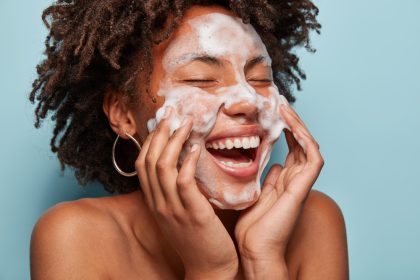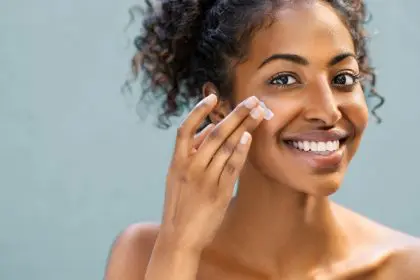Mushroom-infused skincare products are flooding the beauty market, with brands touting the anti-aging, hydrating, and brightening benefits of various fungi extracts. From reishi serums to shiitake moisturizers, mushroom-based beauty products promise everything from reduced inflammation to improved skin texture, but dermatologists are taking a more cautious approach to this trending ingredient category.
While some mushroom compounds show genuine promise in laboratory settings, the translation to effective skincare products isn’t always straightforward. Understanding what science supports and what remains marketing hype helps consumers make informed decisions about incorporating fungal ingredients into their routines.
Certain mushroom compounds show real potential
Kojic acid, derived from koji mushrooms used in fermentation, has well-documented skin-brightening properties that can help fade hyperpigmentation and even skin tone. This compound has been used in skincare for decades and has substantial research supporting its effectiveness for treating melasma and age spots.
Beta-glucans extracted from mushrooms like reishi and shiitake demonstrate genuine moisturizing and anti-inflammatory properties in clinical studies. These polysaccharides can help strengthen the skin barrier and provide hydration while potentially reducing redness and irritation in sensitive skin types.
Antioxidant compounds found in various mushrooms, including ergothioneine and selenium, offer legitimate protection against environmental damage and may help prevent premature aging. These antioxidants work similarly to vitamin C and vitamin E but with potentially unique benefits for cellular protection.
Mushroom extracts containing natural enzymes can provide gentle exfoliation similar to fruit acids but with less irritation potential. This makes them suitable for people who want exfoliating benefits but can’t tolerate traditional alpha or beta hydroxy acids.
Processing methods determine actual effectiveness
The way mushroom compounds are extracted and processed significantly impacts their effectiveness in skincare products. Many beneficial mushroom compounds are water-soluble and unstable, making them difficult to incorporate into cosmetic formulations without losing potency over time.
Heat processing and chemical extraction methods used in manufacturing can destroy or alter the active compounds that provide mushrooms’ purported benefits. This means that products containing mushroom extracts may not deliver the same effects demonstrated in laboratory studies using fresh or properly processed fungi.
Concentration levels of active mushroom compounds in commercial skincare products are often much lower than the amounts used in research studies showing positive effects. Without standardized concentrations or extraction methods, consumers have no way to evaluate product potency.
The stability of mushroom-derived ingredients in cosmetic formulations remains questionable, as many active compounds degrade when exposed to light, air, or other skincare ingredients commonly found in multi-ingredient products.
Marketing claims often exceed scientific evidence
Many mushroom skin care brands make broad anti-aging claims based on traditional use in Eastern medicine rather than clinical evidence specific to topical application. While mushrooms may have health benefits when consumed, this doesn’t automatically translate to skincare effectiveness.
The association of mushrooms with longevity and wellness in traditional cultures has been leveraged by marketing teams to suggest that topical application provides similar benefits. However, the skin absorption and utilization of mushroom compounds differs significantly from oral consumption.
Some brands claim that mushroom extracts can boost collagen production or dramatically improve skin texture, but these effects haven’t been consistently demonstrated in peer-reviewed dermatological research. The evidence for these dramatic anti-aging claims remains largely anecdotal.
The mystique surrounding exotic mushroom varieties like cordyceps or lion’s mane creates premium pricing for products that may not offer benefits beyond those of more common, less expensive ingredients.
Dermatologists recommend cautious optimism
Skin specialists generally view mushroom skincare as potentially beneficial but emphasize that the ingredient category is still evolving and needs more research. They recommend treating mushroom products as supplementary rather than replacement ingredients for proven skincare actives.
Dermatologists note that mushroom extracts are generally well-tolerated and rarely cause irritation, making them suitable for sensitive skin types who want to experiment with new ingredients. The gentle nature of most mushroom compounds makes them safer options than many trending skincare ingredients.
However, medical professionals caution against expecting dramatic results from mushroom skincare products alone. They recommend incorporating fungal ingredients alongside established treatments like retinoids, sunscreen, and proven antioxidants rather than relying solely on mushroom-based routines.
Dermatologists also emphasize the importance of choosing products from reputable brands that provide transparent information about extraction methods, concentrations, and stability testing for their mushroom ingredients.
Smart integration strategies for mushroom skincare
Start with single-ingredient mushroom products to assess your skin’s response before investing in expensive multi-mushroom formulations. This approach allows you to identify which specific fungal extracts work best for your skin type and concerns.
Look for products that combine mushroom extracts with proven ingredients like hyaluronic acid, ceramides, or niacinamide to maximize benefits while ensuring the product delivers measurable improvements to your skin.
Pay attention to product packaging and storage requirements, as mushroom-derived ingredients may require protection from light and air to maintain their effectiveness. Products in dark glass containers or airless pumps are more likely to preserve active compounds.
Consider mushroom skincare as part of a comprehensive routine rather than a miracle solution, combining fungal ingredients with established skincare fundamentals like gentle cleansing, moisturizing, and sun protection for optimal results.













